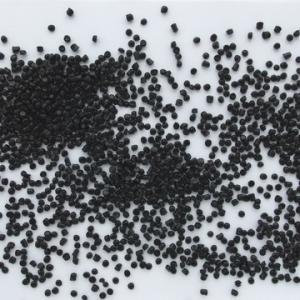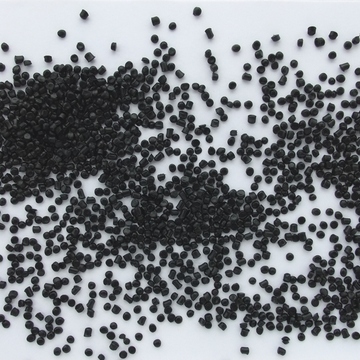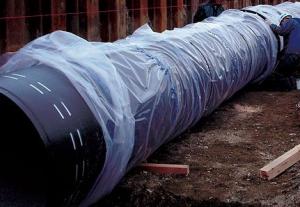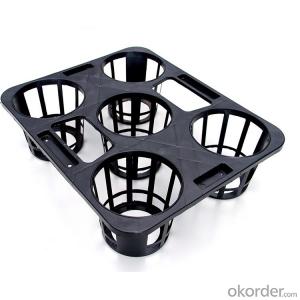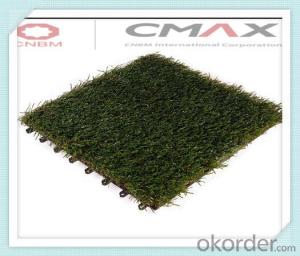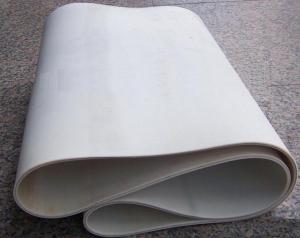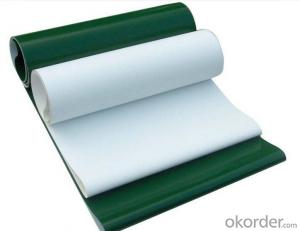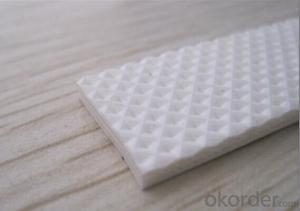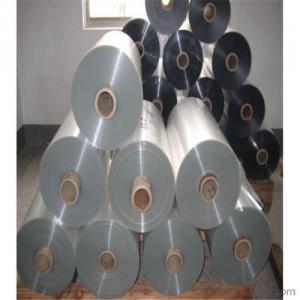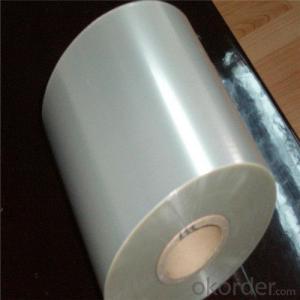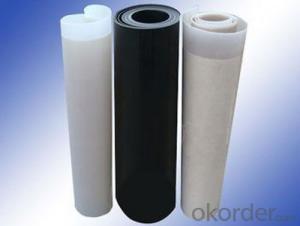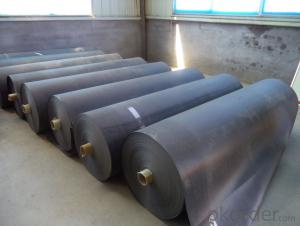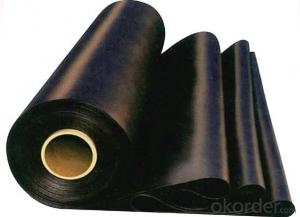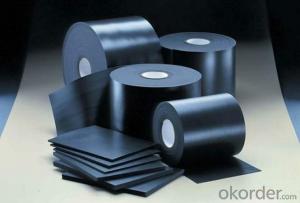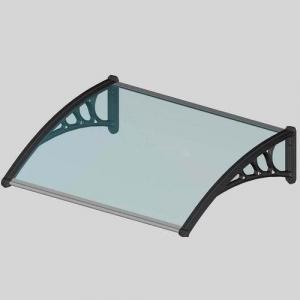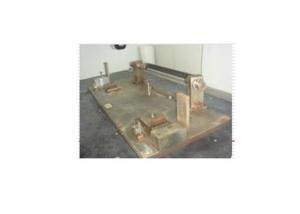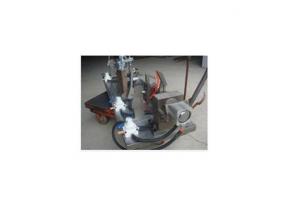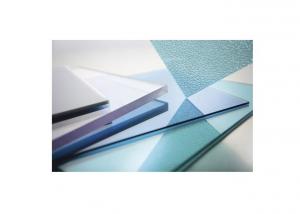EPDM insulating rubber compound
- Loading Port:
- Shanghai
- Payment Terms:
- TT OR LC
- Min Order Qty:
- -
- Supply Capability:
- 3000 Tons kg/month
OKorder Service Pledge
OKorder Financial Service
You Might Also Like
EPDM insulating rubber compound
I. Type and application
Type | Product | Application |
XJ-50A | 110℃ Insulating rubber compound.EVA | Heat resistant insulating rubber compound for cables and wires,EVA |
XJ-30A | 90℃ Insulating rubber compound | Heat resistant insulating rubber compound for cables and wires |
XJ-30B | 90℃ Insulating rubber compound | Heat resistant insulating rubber compound for 0.6/1KV cables and wires |
XJ-30F | 90℃Irradiation cross-linkable insulating EPDM rubber compound | Heat resistant EPDM insulating compound which processing in plastic extruder. |
XJ-60A | 125℃ Insulating rubber compound | Heat resistant insulating rubber compound for maximum 1KV cables and wires |
II. Product description
EPDMinsulating rubber compound, based on EPDM rubber, is mixed with variousadditives, and is elaborated in the extra-clean conditions. It has varioustemp. grades. The compound has outstanding performances of vulcanization, processing, physical,mechanical, aging and electrical properties. The compound is complied withQ/320585JSDT058-2003 standard.
III. Processing
Type | Processing Equipment | Compression ratio | L/D | Processing temp. | Recommended vulcanize temp. |
XJ-50A XJ-30A XJ-30B XJ-60A | Common rubber extruder | 1.1:1~1.5:1 | 15:1~20:1 | 60~110℃ | 160-200℃ |
XJ-30F | Common rubber extruder | 1.1:1~1.5:1 | 20:1~25:1 | 110~180℃ | 15-20 megarad irradiation dosage |
IV. Maximum useful shelf life
12 monthsat 20℃, 6months at 30℃.
V. Properties
Table
Item | XJ-50A | XJ-30A | XJ-30B | XJ-30F | XJ-60A | |||||
Standard | Typical | Standard | Typical | Standard | Typical | Standard | Typical | Standard | Typical | |
Tensile Strength N/mm2 | ≥6.5 | 12.0 | ≥4.2 | 6.5 | ≥8.5 | 11.0 | ≥4.2 | 9.6 | ≥8.5 | 12.2 |
Elongation at Break % | ≥200 | 280 | ≥200 | 280 | ≥200 | 400 | ≥200 | 350 | ≥200 | 450 |
Oven aging 135℃240h | 150℃240h | 135℃168h | 135℃168h | 135℃168h | 158℃168h | |||||
Variation on Tensile Strength % | ≤±30 | +5 | ±30 | -10.8 | ±30 | +5 | ±30 | +5 | ±30 | +9.5 |
Variation on Elongation at Break % | ≤±30 | -6 | ±30 | -10.7 | ±30 | -11 | ±30 | -9.5 | ±30 | -8.0 |
Dielectric Strength MV/m | ≥25 | 26 | ≥25 | 28 | ≥25 | 28 | ≥25 | 27 | ≥25 | 30 |
Air bomb aging test 127℃40h |
|
|
|
|
|
|
|
|
|
|
Tensile Strength N/mm2 | ≥6.0 | 11.3 | ≥6.0 | 6.0 |
|
|
|
|
|
|
Variation % |
| -6 | ±30 | -8.3 | ±30 | -8 | ±30 | -4 | ±30 | -6 |
Elongation at Break % |
| 240 |
| 270 |
|
|
|
|
|
|
Variation % | ≤-30 | -15 | ±30 | -3.6 | ±30 | -6 | ±30 | -5 | ±30 | +3 |
Hot Prolongation 250℃ | 15min20N/cm | 15min20N/cm | 15min20N/cm | 15min20N/cm | 15min20N/cm | |||||
Elongation Under Load % | ≤100 | 60 | ≤175 | 60 | ≤175 | 60 | ≤175 | 70 | ≤175 | 50 |
Permanent Elongation after cooling % | ≤25 | 10 | ≤15 | 10 | ≤15 | 10 | ≤15 | 10 | ≤15 | 10 |
Volume Resistivity at 20℃Ω﹒m | ≥1.0×1010 | 2.5×1012 | ≥1.0×1010 | 1.2×1012 | ≥1.0×1010 | 1.5×1013 | ≥1.0×1010 | 8.5×1012 | ≥1.0×1010 | 2.0×1013 |
Elastic Modulus |
|
|
|
|
|
|
|
|
|
|
At 150% ElongationN/mm2 |
|
|
|
| ≥4.5 | 5.5 |
|
| ≥4.5 | 6.5 |
At 50% Elongation N/mm2 |
|
|
|
| ≤7.5 | 6.1 |
|
| ≤7.5 | 5.0 |
Capacitance variation after water immersion 50±2℃ |
|
|
|
|
|
|
|
|
|
|
Between one day and seven days % |
|
|
|
| ≤15 | 10 |
|
| ≤15 | 8 |
Between seven days and fourteen days % |
|
|
|
| ≤5 | 2 |
|
| ≤5 | 2 |
Hardness IRHD |
|
|
|
| ≥80 | 80 |
|
| ≥80 | 80 |
Ozone Resistance and Ozone Concentration |
|
| 0.025-0.030%30h | 2-3.33PPM | 0.025-0.030%30h | 2-3.33PPM | ||||
Surface Variation |
|
| Non cracking | Non cracking | Non cracking | Pass | Non cracking | Non cracking | Non cracking | Pass |
Heat Pressing Deformation 150℃0.5h |
|
|
|
|
|
|
|
|
|
|
Pressing Depth % | ≤50 | 25 |
|
|
|
|
|
|
|
|
- Q: How is the recycling of plastic bottles handled?
- Polyethylene propertyPolyethylene is odorless, non-toxic, feel like wax, has excellent resistance to low temperature performance (minimum temperature can reach -70 ~ -100 C), good chemical stability, erosion resistance to most acid-base (not resistant to oxidizing acid), insoluble in common solvents at room temperature, low water absorption, excellent electrical insulation properties; but polyethylene for environmental stress (chemical and mechanical function) is very sensitive, heat aging resistance difference.
- Q: Plastic molding is what to do, how the process?
- The plastic molding is various forms (such as powder, granules, solution and dispersion) of plastic products or parts required for the shape of. Simply put, it's the plastic process that produces plastic or plastic parts.
- Q: How do you install an olive net?
- To install an olive net, you typically need to follow these steps: 1. Start by measuring the area where you want to install the olive net. Ensure it is large enough to cover the entire olive tree or orchard. 2. Clear the area from any debris, branches, or other obstacles that could interfere with the installation process. 3. Attach sturdy support poles around the perimeter of the olive tree or orchard. These poles should be tall enough to allow the net to hang freely without touching the ground. 4. Unroll the olive net and position it over the olive tree or orchard, making sure it covers the entire area. 5. Secure the net to the support poles using zip ties or clips. Make sure to fasten it tightly to prevent any gaps or openings. 6. If necessary, adjust the net to ensure it is evenly distributed and properly covers all sides of the olive tree or orchard. 7. Finally, inspect the net for any loose or sagging areas, and tighten or readjust as needed. Remember, it's important to carefully follow the manufacturer's instructions and consider any specific requirements based on the type of olive net you are using.
- Q: Are there any regulations or guidelines for using olive nets?
- Yes, there are regulations and guidelines for using olive nets. These guidelines may vary depending on the specific region or country. However, common regulations typically include ensuring the nets are properly installed and secured to prevent damage to the olive trees, using nets with appropriate mesh sizes to avoid entanglement of birds or other animals, and adhering to specific harvesting and storage practices to maintain the quality of the olives. It is advisable to consult local agricultural authorities or olive farming associations for specific regulations and guidelines in your area.
- Q: Do olive nets protect against olive tree bark damage?
- Yes, olive nets can protect against olive tree bark damage. These nets are typically used to cover the trees and prevent pests, birds, and other animals from damaging the bark. They create a physical barrier that helps to safeguard the tree's trunk and prevent any potential harm.
- Q: How does an olive net affect the overall fruit quality in the olive grove?
- An olive net can positively affect the overall fruit quality in an olive grove. It helps to protect the olives from external factors such as birds, insects, and wind, reducing the risk of damage or contamination. By preventing these factors from coming into contact with the olives, the net helps maintain their integrity and quality. Additionally, the net can also provide shade, which can regulate the temperature and prevent excessive sun exposure, thus contributing to better fruit quality.
- Q: Why don't you put the plastic bags in the fridge?
- Plastic bags will also release plasticizers, contact bags of food will intake, and cause many hazards to human health.
- Q: Are olive nets easy to set up and take down?
- Yes, olive nets are generally easy to set up and take down. They are designed to be lightweight and portable, allowing for convenient installation and removal. With a simple assembly process and user-friendly features, olive nets can be quickly installed to protect the trees during harvest and easily removed when the job is done.
- Q: Can I marinate salted eggs with a plastic bucket?
- Lead salt antioxidant of polyvinyl chloride (PVC) products and ethanol, ether and other solvent exposure will lead precipitation. Lead salt of PVC as a food packaging and Deep-Fried Dough Sticks, fried cake, fried fish, cooked meat products, cake snacks foods to meet, will lead to molecular diffusion into the grease, so can not use PVC plastic bags containing food, especially food containing oil.
- Q: Do olive nets require any specific labeling or certification?
- Yes, olive nets may require specific labeling or certification depending on the country or region where they are being used. Some countries have regulations in place to ensure the safety and quality of agricultural products, including olive nets. Labeling and certification may be required to indicate the type of material used, the manufacturer's information, and compliance with specific standards or guidelines. It is advisable to check with local authorities or regulatory bodies to determine the specific labeling or certification requirements for olive nets in a particular area.
Send your message to us
EPDM insulating rubber compound
- Loading Port:
- Shanghai
- Payment Terms:
- TT OR LC
- Min Order Qty:
- -
- Supply Capability:
- 3000 Tons kg/month
OKorder Service Pledge
OKorder Financial Service
Similar products
Hot products
Hot Searches
Related keywords
